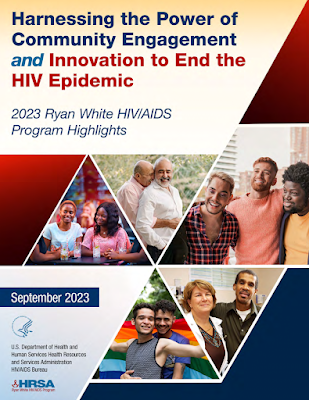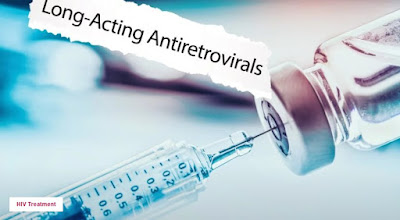By: Marcus J. Hopkins, ADAP Blog Guest Contributor, and Founder & Executive Director of the Appalachian Learning Initiative (APPLI)
In September 2023, alarming data on overdose deaths was published in the Morbidity and Mortality Weekly Report (MMWR). In response, ADAP Advocacy and the Partnership for Safe Medicines (PSM) issued a press release, ADAP Advocacy Calls for More Awareness on Counterfeit Medicines, calling attention to an increase in the infiltration of counterfeit medications into both the legitimate pharmaceutical marketplace and the illicit drug markets. “Unlike counterfeit opioid pills which often kill instantly, counterfeit HIV medications will victimize patients silently and slowly. Treatment failure, with a whole host of health events, will be the only clue a patient and their physician will notice,” stated Brandon Macsata, ADAP Advocacy’s CEO.
 |
| Photo Source: HHS |
There have been two recent very high-profile examples of counterfeit drugs entering the marketplace: Janssen’s Symtuza (darunavir/ cobicistat/ emtricitabine/ tenofovir alafenamide) and Gilead’s Biktarvy (bictegravir/ emtricitabine/ tenofovir alafenamide) and Descovy (emtricitabine/ tenofovir alafenamide).
The Janssen case came to light on December 24th, 2020, when the company released a statement warning patients, providers, and pharmacists that counterfeit versions of their highly effective HIV drug, Symtuza, had entered the consumer market through pharmacies that had purchased their drugs from distributors that were not authorized by Janssen. In an effort to alert consumers, Janssen began distributing information to providers, patients, and pharmacists with pictures and descriptions of authentic Symtuza pills and informing providers and pharmacists to reach out to patients to alert them to be on the lookout for counterfeits.
Similarly, Gilead Sciences announced on August 5th, 2021, that counterfeit versions of Biktarvy and Descovy had made their way to pharmacy shelves, again via unauthorized distributors, and again provided images of authentic pills and packaging to allow patients to better identify counterfeit products.
Both companies responded in similar ways—attempting to educate the consumer population about authentic products while simultaneously working to address unauthorized distributors. Gilead went further in 2022 by announcing that they were working to identify and sue two individuals responsible for leading and orchestrating the scheme. Their investigation found that these two individuals had directed the initial sale through suppliers created solely to sell counterfeit products. Further action was taken when an asset freeze order was unsealed revealing that 50 defendants were added to the suit. Janssen followed shortly after by announcing its own lawsuit.
And then, there’s the illicit drug market…
A September 1st, 2023, MMWR found evidence that the evidence of overdose deaths resulting from counterfeit pills increased from 2.0% in July-September 2019 to 4.7% in October-December 2021. Fentanyl was the only drug involved in 41.4% of deaths with evidence of counterfeit pill use and 19.5% of deaths without evidence.
The issue, here, isn’t that patients are purchasing counterfeit prescription drugs from pharmacies, but that they’re purchasing them from illicit sources (e.g., illicit drug dealers). And yet, these are still counterfeit versions of legitimate pharmaceutical drugs, each designed to look roughly identical to their authentic counterparts—in these cases, primarily oxycodone (the generic version of OxyContin, a powerful and highly addictive pain medication) and alprazolam (the generic version of Xanax, a drug used primarily to treat anxiety or panic attacks, and one of the most addictive benzodiazepine medications on the market).
 |
| Photo Source: Drug Enforcement Administration |
Unlike HIV or specialty medications that have very specific, patented designs, both oxycodone and alprazolam have generic equivalents that can make spotting counterfeit versions more difficult. In September 2021, the U.S. Department of Justice's Drug Enforcement Administration (DEA) put out a fact sheet with an image showing the similarities between authentic and counterfeit oxycodone, and the reality is that, unless someone is actively examining each pill they take, the differences are hard to spot. At first glance, the counterfeit version looks like it’s more authentic than the real M30 tablet because the markings are clearer and easier to read.
A bigger concern, here, is that the pills that are shown to have the highest likelihood of being counterfeited are ones to which people may be highly addicted, making them less likely to check pills for authenticity, rather than to just take the pills, either orally or via smoking, the most common non-ingestion drug use route among deaths with evidence of counterfeit drug use (39.5%). This can be exceptionally dangerous, particularly among younger people who are less likely to have experience identifying and avoiding counterfeit drugs. Moreover, those with severe addictions may be driven more by the need to satiate their need than any concerns about potential overdose risks.
Two of the findings from the MMWR report were that overdose deaths with evidence of counterfeit pill use were significantly more likely to occur among young people, with 57.1% of said overdoses occurring in people aged younger than 35 and were more often to occur in Hispanic or Latino populations (18.7%). If these young people are anything like I was in my twenties, they’re not likely to check the provenance of their drugs, rather than just take them.
Additionally, this increase in overdoses impacts a region that has traditionally seen relatively few fentanyl-based overdose deaths compared to the South, Midwest, and New England: the West (Hernandez, 2023). When looking at states in the West, the rate of overdose deaths with evidence of counterfeit pill use surged from 4.7% to 14.7% in the time period examined. Researchers indicate that the type of heroin prevalent in the West—black tar heroin—is difficult to mix with white powder fentanyl, which has made it less likely to be found in Western states. Counterfeit medications, however, make it easier to introduce fentanyl into the market.
 |
| Photo Source: CDC |
Note. Retrieved from O’Donnell et al., 2023.
Outside of the United States, it was announced on October 24th, 2023, that several people living in Austria were hospitalized after using suspected counterfeits of the blockbuster diabetes and weight loss drug Ozempic (semaglutide). Ozempic, made by Danish company Novo Nordisk, has been shown to drastically improve weight loss outcomes and was approved by the U.S. Food & Drug Administration (FDA) for that purpose under the brand name Wegovy. The drug’s popularity for weight loss purposes has exacerbated supply chain issues, causing worldwide shortages of the drug for patients living with diabetes. Counterfeiters are recognizing these shortages as an opportunity to bring fake versions of the injector pens to the market packaged in official boxes. Authorities in Germany and Britain have been investigating cases where a wholesaler in Austria sold these counterfeits to Germany and to two additional wholesalers in Britain. Here in the United States, similar reports of counterfeit Ozempic were reported in August 2023.
What makes counterfeit pills so dangerous is that people have come to trust in the security of pills. We assume that medications in pill form are guaranteed to be safe, even when we purchase them from illicit sellers, and we do so because we’ve been told by numerous agencies that they are safe, from the FDA who approves them to the manufacturers, providers, and pharmacists who sell them. We also assume, when we buy pills from illicit sources, that they have procured those pills from legitimate sources and are just reselling them. When counterfeit pills enter the market, whether credible-looking fakes of specialty medications or convincing fakes of generic drugs, patients begin to lose trust in the system that fails them…assuming they’re still alive to lose that faith..
Disclaimer: Guest blogs do not necessarily reflect the views of the ADAP Advocacy Association, but rather they provide a neutral platform whereby the author serves to promote open, honest discussion about public health-related issues and updates.


.png)






